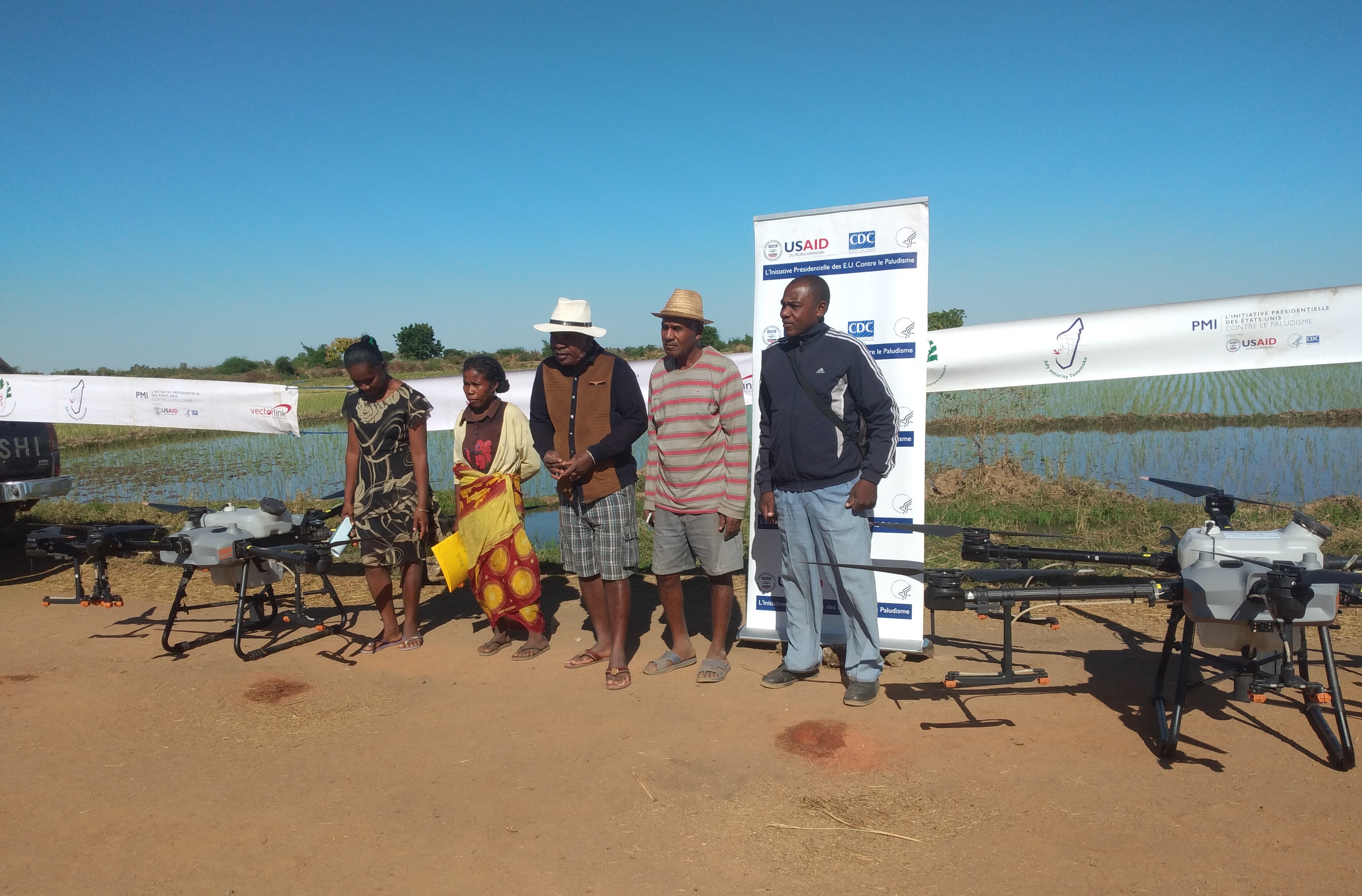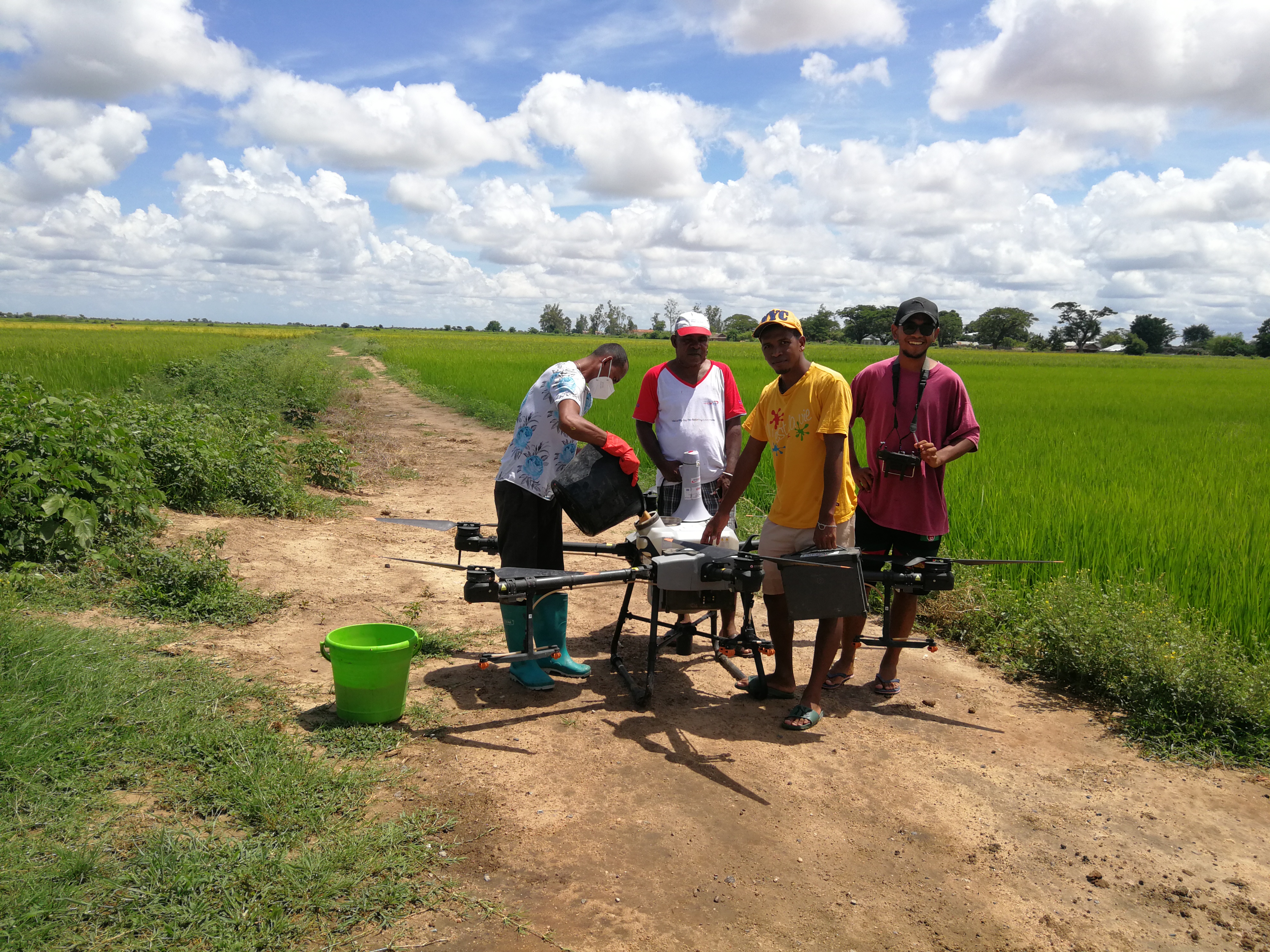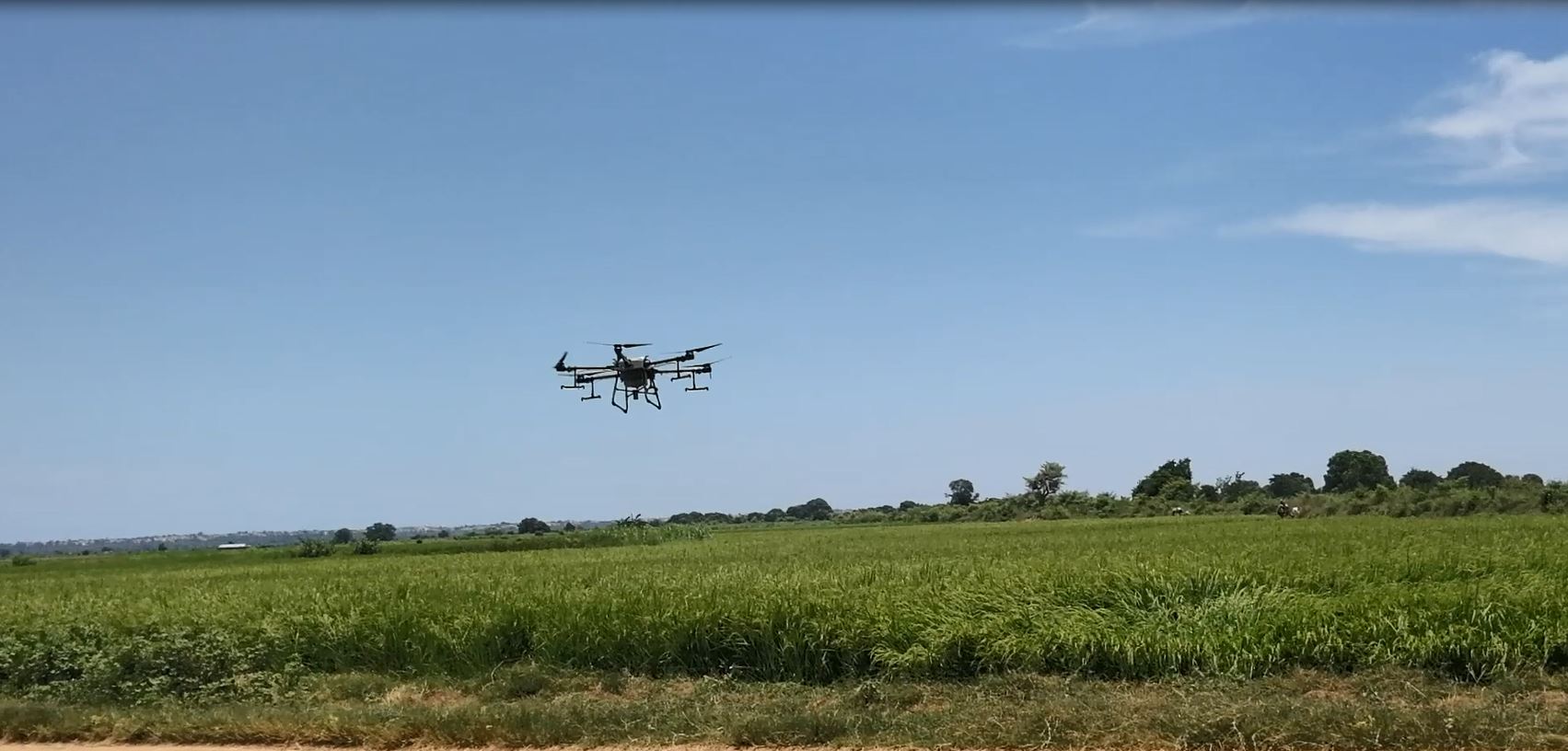Rice fields are an ideal breeding site for mosquitoes, who lay their eggs in the irrigated water. This is bad news for many farmers in Madagascar, whose livelihoods depend on rice cultivation. Farmers, along with other people living around the rice fields, have an increased risk of infection by malaria-carrying mosquitoes because of the proximity to breeding sites.
To address this risk, Madagascar’s Ministry of Health, through the National Malaria Program (NMP), worked with the U.S. President’s Malaria Initiative (PMI) VectorLink Madagascar team to pilot larval source management (LSM) using drones as a complementary malaria vector control intervention in the districts of Ankazobe and Morombe.
LSM refers to the management of water bodies that are potential mosquito breeding sites by applying a biological or chemical larvicide. In Madagascar, this pilot initiative used the larvicide VectoBac® WG which contains a naturally occurring bacterium referred to as Bti, which kills mosquito larvae present in water but does not harm humans, other insects, crops, or water supplies. A primary challenge of this malaria control intervention is to convince the community that the larvicide is safe and won’t impact their livelihood. Edmond Dadivahiny (seen in photo below) was tasked with just that.

As a representative of the Federation of Water Users’ Associations of Lower Mangoky (Fédération des Associations des Usagers de l’Eau du Bas Mangoky – FAMA), Edmond was among those chosen to educate rice farmers about the pilot and the benefits of LSM, and why they should accept the intervention. “I explained that Bti is biological, and that there are no side effects on human health, farm animals, or plants,” he shares. “The best way to convince farmers is to tell them the good things about the intervention.”
FAMA ensures the management and maintenance of irrigation canals in rice fields among the water user associations in the area. Rice farmers in Lower Mangoky are organized into 23 different water user associations. Having members like Edmond supervise the spraying of the larvicide ensured that the farmers’ concerns were addressed by someone who understood their worries. FAMA representatives also supported advocacy at the district level and helped to train mobilizers.
The NMP and PMI VectorLink Madagascar, in coordination with the Ministry of Agriculture and Livestock and the Ministry of Environment and Sustainable Development, determined that drones would be the best way to spray the larvicide throughout the rice fields because they are able to fly over the fields without disturbing the crops. “The drone operator can also quickly complete the spraying,” says Edmond. This limits the disruption during the workday.

To prepare the community for the first round of this intervention, PMI VectorLink Madagascar and the NMP trained 35 technicians from the government and FAMA as supervisors who oversaw 178 community participants in Ankazobe and 154 in Morombe, who worked in roles such as mobilizers, and oversaw the implementation of the spraying.
“I was trained on the different strategies to fight malaria; the lifecycle of mosquitoes; how LSM works, especially the use of Bti and drones; when LSM should occur, and how Bti works in rice fields,” says Edmond. “I was also trained on how to communicate the benefits of this intervention, which included interpersonal, group, and mass communication.”
From February to July 2022, during the rainy season when malaria transmission is high, the NMP and PMI VectorLink Madagascar conducted the first round of LSM via drones in 17 fokontany (villages) in Morombe and Ankazobe. Drones sprayed Bti in irrigated rice fields twice per month to control vector populations. During this time, the communities’ understanding of the benefits also increased. “After the first spray, people saw that it was not deadly, and there were no effects on humans or animals,” shares Edmond. After spraying ended, “people were talking about how much malaria has decreased. It appears that this strategy is effective.”

In Morombe, there has been a recorded decline in the number of mosquito larvae present in the rice fields. Before LSM began, the number of larvae per liter averaged 9.7 in Morombe. In September 2022, two months after the last spray of Bti for round one of LSM, the average larvae density was 5 per liter in Morombe. In Ankazobe, the results seem promising although contributing factors like the dryness of the rice fields make it difficult to attribute lower numbers of larvae exclusively to LSM.
For Edmond, this intervention has been a success for the rice farmers. Before LSM, mosquitoes made working in the rice fields challenging. “It was hard for them to finish their work,” he said. Using LSM as a complementary malaria control tool in rice farming communities can be an effective way to protect people while they go about their daily work.

